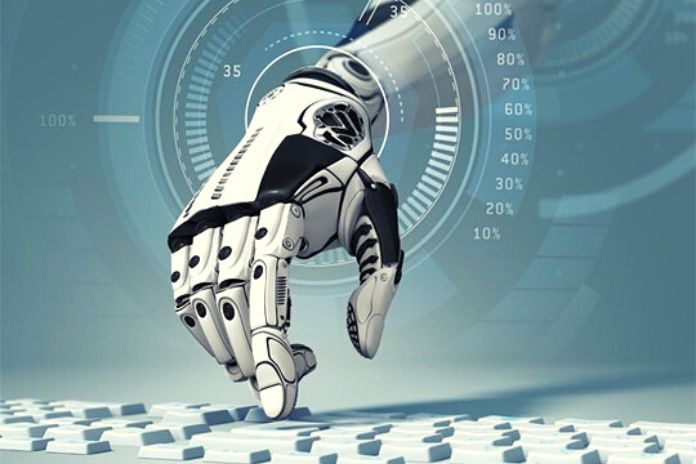For 2022, the IFR has identified five trends that will further drive adoption. Here are The 5 trends driving the growth of robots and automation technologies.
The Adoption Of Robots In New Areas
Robots are beginning to be embraced even in those sections where the utilization of robotization advances is generally later. The pattern is driven by request, with customers requesting more personalization in both item and conveyance. Pattern coming about because of the development of web-based business, advanced by the pandemic, which will proceed with its altercation in 2022. Subsequently, many robots have been introduced all over the planet today that didn’t exist in these sections only a long time back.
With an end goal to address work deficiencies, organizations that poor people recently considered robotization would rethink. This will particularly influence organizations that depend on help laborers, for example, retail and cafés, which are finding it progressively hard to fill empty positions. Subsequently, the IFR predicts that these organizations will put resources into computerization to address client issues. The spread of robotization advances will likewise influence those ventures for which mechanical technology is moderately new, like those of appropriation and operations, development, horticulture, and numerous others.
Robots Are Increasingly Easier To Use
Carrying out robots can be a mysterious errand. However, more up-to-date ages of robots are simpler to utilize. There is a good pattern towards UIs that permit straightforward manual programming and direction of robots. Robot producers and some outsider merchants offer equipment bundles alongside programming to work with execution. This pattern might appear straightforward, but contributions emphasizing complete environments add huge worth by diminishing exertion and uptime.
The pattern towards minimal expense mechanical technology is likewise joined by simple design and establishment, with explicit and, at times, pre-arranged applications. Sellers offer standard projects with grippers, sensors, and regulators, while application stores give programming schedules to different applications and back the utilization of minimal expense robots.
More And More Companies Are Investing In Worker Upskilling
An ever-increasing number of states, industry affiliations, and organizations see the requirement for fundamental robot and mechanization instruction early on for the up-and-coming age of laborers. Hence, it may be expected that organizations will expand their inner preparation endeavors, which will be added outside instructional classes to the organization. A sign of this pattern comes from information on the preparation projects of enormous robot makers, for example, ABB, FANUC, KUKA, and YASKAWA, which every year register somewhere between 10,000 and 30,000 members in their robot courses in over 30 nations.
Advanced mechanics are changing the expert profiles of laborers to improve things. As the new flood of renunciations, named in the United States as “The Great Resignation,” shows, individuals need to work in a cutting-edge climate where they can construct a vocation. New preparation open doors with mechanical technology are mutually beneficial for the two organizations and workers: exhausting, grimy, and risky errands are robotized, as individuals master critical abilities for the business representing things to come and build their actual capacity. Income during their vocation.
The Use Of Robots For The Resilience Of Supply Chains
Trade Tensions among nations and supply hardships brought about by the pandemic are pushing assemblies to survey supply fastens with a view to nearshoring because of the commitment to computerization. An essential measurement from the United States shows how computerization is assisting organizations with returning to work: According to the Association for Advancing Automation (A3), robot orders in the United States in the second from last quarter of 2021 expanded by 35% contrasted with a similar period in 2020. A more significant part of the orders come from non-car areas.
What’s more, this record development isn’t just about advanced mechanics – machine vision, motion control, and engines are considering massive expansion to be well. “The pandemic and the subsequent disturbances to supply chains and labor accessibility seem to have been the push many expected to legitimize the speculation, IFR Secretary General.”The organizations probably going to put resources into robotization are the ones that have been thinking about it for some time yet haven’t made the last stride.
Robots Support Digital Automation
The IFR likewise gives that, beginning from 2022, mindfulness among organizations of the utilization of information as an element empowering the creation of coherence of the association will increase. Producers will examine the information gathered by cleverly robotized cycles to go with additional educated choices.
Because of a robot’s capacity to share errands and learn through Artificial Intelligence (AI), organizations can more effectively embrace clever computerization in new conditions, from development to food and refreshment bundling plants to wellbeing labs. Computer-based intelligence for mechanical technology is developing, and learning robots are becoming standard. The business has passed the pilot stage, and in 2022 there will be more noteworthy dissemination of these advances.
Also Read: Blockchain, Security, And Privacy: Let’s Be Clear

